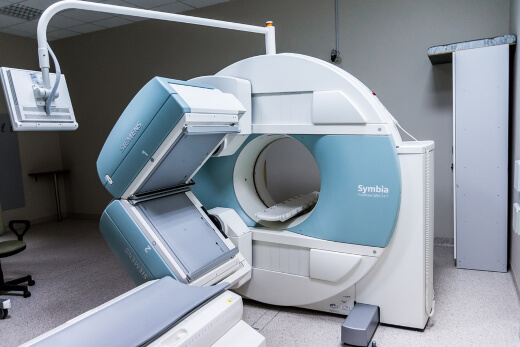Tennis elbow is a painful condition known as epicondylitis. It is inflammation of the tendons in the forearm next to the elbow. It is a condition that usually affects people between the ages of 30 and 50. Nevertheless, it can be experienced by people of all ages.
Even though it is referred to as tennis elbow, you can get it without playing tennis. Anyone that does any type of repetitive motion with their arm is susceptible to the painful condition.
It is a common injury that often only requires minor treatment. In severe cases, surgery may be needed.

Tennis Elbow Symptoms
Pain in the upper forearm near the elbow is the most common symptom of epicondylitis. The pain is often frequent and is felt on the outside of the forearm. In some cases, the pain may radiate down the arm to the wrist.
Pain is often worse when bending the arm or lifting objects. It can also occur when performing everyday tasks, such as brushing your teeth, turning a doorknob, or writing.
What Causes Tennis Elbow
Tennis elbow is caused by repetitive overuse of the forearm. The repetitive stressful motion leads to small tears in the tendon. The tendon attaches the outside of the elbow to the forearm muscle.
The pain often starts as a dull ache. Over time, the pain can get worse making everyday tasks unbearable. The pain can get so bad even the outside of the elbow can become painful to the touch.
Some common causes of epicondylitis:
- Playing sports such as tennis and racquetball
- Use of a computer mouse
- Painting
- Playing of some musical instruments
- Use of some construction tools
- Swimming
- Manual work
- Assembly line work
- Repetitive cutting with a knife
- Gardening and yard work
- Weightlifting
- Knitting and other hobbies
Risk factors for Epicondylitis
There are a few risk factors that can increase the risk of experiencing epicondylitis:
Playing Sports
Athletes that play sports that involve the use of a racket have a higher risk of epicondylitis.
Occupation
Individuals that are employed in jobs that require competitive motion of the arm and wrist have a higher chance of suffering from epicondylitis.
Age
People that are between 30 and 50 years of age are more susceptible to epicondylitis.
Diagnosing Tennis Elbow
Diagnosing tennis elbow is fairly simple. Your doctor may have you perform simple tasks to test your range of motion. In some cases, they may have you get an X-ray or MRI to exclude other possible conditions.
Other conditions that cause elbow pain:
- Osteoarthritis
- Rheumatoid Arthritis
- Radial Tunnel Syndrome
- Osteochondritis Dissecans

Treatment for Tennis Elbow Pain
There is no cure for epicondylitis. However, several tennis elbow treatment methods can help relieve pain.
Rest the Arm
If you are experiencing epicondylitis, it is important that you rest your arm. Resting will give your tendon the time it needs to repair itself.
Massages
Deep tissue massages and ice massages can help reduce pain and stimulate healing.
Use Support
Taping or strapping the forearm can add support and realign the muscle fibers.
Anti-inflammatory Drugs
The use of anti-inflammatory drugs can help provide epicondylitis relief.
Steroid Injections
If the pain does not subside on its own, you may be prescribed steroid injections by your physician.
Physical Therapy
Our exercise physiologists can customize you a tennis elbow therapy plan. By strengthening certain muscles, you can help to prevent epicondylitis.
Surgery
In rare cases, your physician may suggest surgery to remove the damaged part of the tendon.
Preventing Epicondylitis
Tennis elbow is not completely preventable. But there are some things that you can do to reduce the risk of experiencing this painful condition.
- Warm up the muscles
- Cool down after your workout
- Improve forearm muscle strength
- Use lighter tools and sports equipment
- Avoid repetitive movements
- Wear a tennis elbow strap
- Take regular breaks
- Seek advice from an exercise physiologist
Contact Us for Tennis Elbow Prevention and Relief
The Accredited Exercise Physiologists at SSEP will create you a personalised exercise program. Based on your assessment we can help you bring back a full range of motion, reduce pain, restore muscle strength, and prevent future episodes of tennis elbow.
